You press the same button when you are horny and when you are sad, is the thing. Such is Instagram. Such is the deep kernel of truth at the heart of every so-called "like".
You press the heart, and every gamut of human emotion – the one that wants to fuck; the one that sympathises deeply; the one that is your mum, on the iPad with the font size all turned up, methodically going through every single post of yours from the last five years – is expressed by the same little motion: tap. Such a blunt tool for such a sheer and infinite range of human feeling. Think about it: the Instagram "like" at 6PM means different to 8PM means different to 1AM. The like you don’t "like" means as much as every like you "like". Every heart-tap, every hovered thumb, contains multitudes.
And so it is up to us – anthropological documenters as we are, you and I – to try to figure what it all means. Does the flame emoji autoreply to an Instagram story mean anything? No. More often than not, it is an accident. Does a new follower liking eight of your photos in a row mean anything? Yes. What about the ominous re-follow from the person who ghosted you 14 months ago? Oh, yes. Yes and yes and yes. It all means something.
Here, broadly, is a rough framework we can all try to work onwards from:
1. THE ‘HORNY’ LIKE
In which we like something because we are horny
I think it is important to recognise that the pulsing blood in the rigid veins of Instagram is The Horny Like. The Horny Like underpins everything. As the premier flirting (and relationship-maintaining) platform, Instagram floats on a sloshing sea of horniness. You smash that mf'ing horny like button, you move into the DMs, the DMs move back to you, the cycle continues. Even liking photos of things we want – trainers, tacos, Glossier drops – sits in an uneasy well of horniness. When we like something, we are horny for it. Instagram is the app where you see things and like them. It stands to reason that The Horny Like is a mainstay within it.
That said, the bread-and-butter Horny Like is just one step up the Horny Instagram Ladder. The Horny Like in the cold light of day: that’s just a small declaration of passing horniness. The Horny Like as the sun starts to set and the sky turns blue to black? Lingering horniness, legacy horniness. A like dings in at midnight? That may as well be a full-on dick- or tit-pic. Horny Likes are tied to the rotation of the earth, the tides, our circadian rhythms, early morning horn and late-night heavy breathing. They increase exponentially when we are drunk. They are the truest expression of ourselves.
2. THE 'HORNY UNLIKE'
In which we deliberately do not like a picture we like in case it makes us look too horny
And so the ballet begins. The Horny Like says: hi. Am horny. The Horny Like too many likes in a row says: I am simply too horny and need medical intervention. And so the horny Instagram user must learn to give their Horny Likes, but also withhold them, so they do not arouse the suspicion of the object of their horny desires and/or the police. A delicate dance in the shadow of a mirror.
An amateur move with the Horny Unlike: to withhold a like from a photo, but return to it two or three days later and give it a dismissive "oh, yeah, whatever" like. Do not do this. A Horny Unlike must stay a Horny Unlike. A Horny Unlike allows you to move through Instagram like a spy in a suit and an earpiece. It allows your horniness to go undetected and unchecked. It is a vital tool in keeping you out of prison.

Photo: Emily Bowler
3. THE 'BEST FRIEND' LIKE
In which you like your friends’ picture because you are best friends
I like all of my best friends' photos, no question. Absolutely none. I’m glad to see him out there doing things that make him happy. Bing–bing. Enjoy your double-tap, my friend. If you like it enough to put it online, then I like it, because I like you. I am glad to see you thriving. I love you with every fibre of my soul.
4. THE 'FRIEND' LIKE
The less clear-cut but still important like in which you like because you’re friends with the person who did the post
I realised about six months ago that likes mean absolutely fucking nothing and there’s absolutely no reason not to chuck them around with sheer abandon. Why did this take me so long? I am, very simply, an idiot. Do you know that likes don’t matter? Do you know there is not some central database of your likes, being sullied if you double-tap on too many memes? Do you, honestly, know how difficult it is to see a list of all the photos you’ve liked? How many menus you go through? Do you really think it matters how much you curate what you double-tap, and how much of that appears on other people's activity feeds? It doesn’t! Like your friends’ new tattoo! Like a picture of their breakfast! Give them a burst of dopamine in the form of a like when they upload their holiday photos! Like a dog! Like a family picture! Like a picture of their dad holding them when they were a kid! Like a photo of their new front room set-up! Like! Like! Like! We! Are! Friends!
5. UNLESS YOUR FRIEND IS IN A BIKINI, THEN IT GETS WHOLLY WEIRD
In which we think about but ultimately decide very hard against doing a friend-like that could in any way be interpreted as being a horny-like
Yeah, apart from that, yeah. Unless you’re absolutely sure you have the kind of friendship that can endure you laying a thick red heart down on a picture of them in swimwear, it is best to steer clear. "Just having a morning swim" captions never mean "just having a morning swim"; they mean "here is a swimwear photo designed in a lab and pre-approved by a WhatsApp group of dozens to make the one person I am DM’ing at the moment smash the like button". Don’t get into a weird, grey, liminal zone where you’ve accidentally liked someone’s thirst trap and now you’ve been uninvited to their birthday party this weekend. Be fucking smart.
6. THE 'SUPPORTIVE' LIKE
In which we praise people for trying their best
If someone is ill and they do an ill selfie where they say they are very congested? That is a supportive like. Or like: first day outfit at a new job? That is a supportive like. Pale arm spiralling off into a distant drip? That’s an S.L. Baked bread but the bread looks like shit but you can tell they’ve been really trying with the baking of the bread? Smash that mf'ing supportive like button. I see you trying but not necessarily succeeding, you say, likingly. Here, take this humble little like.
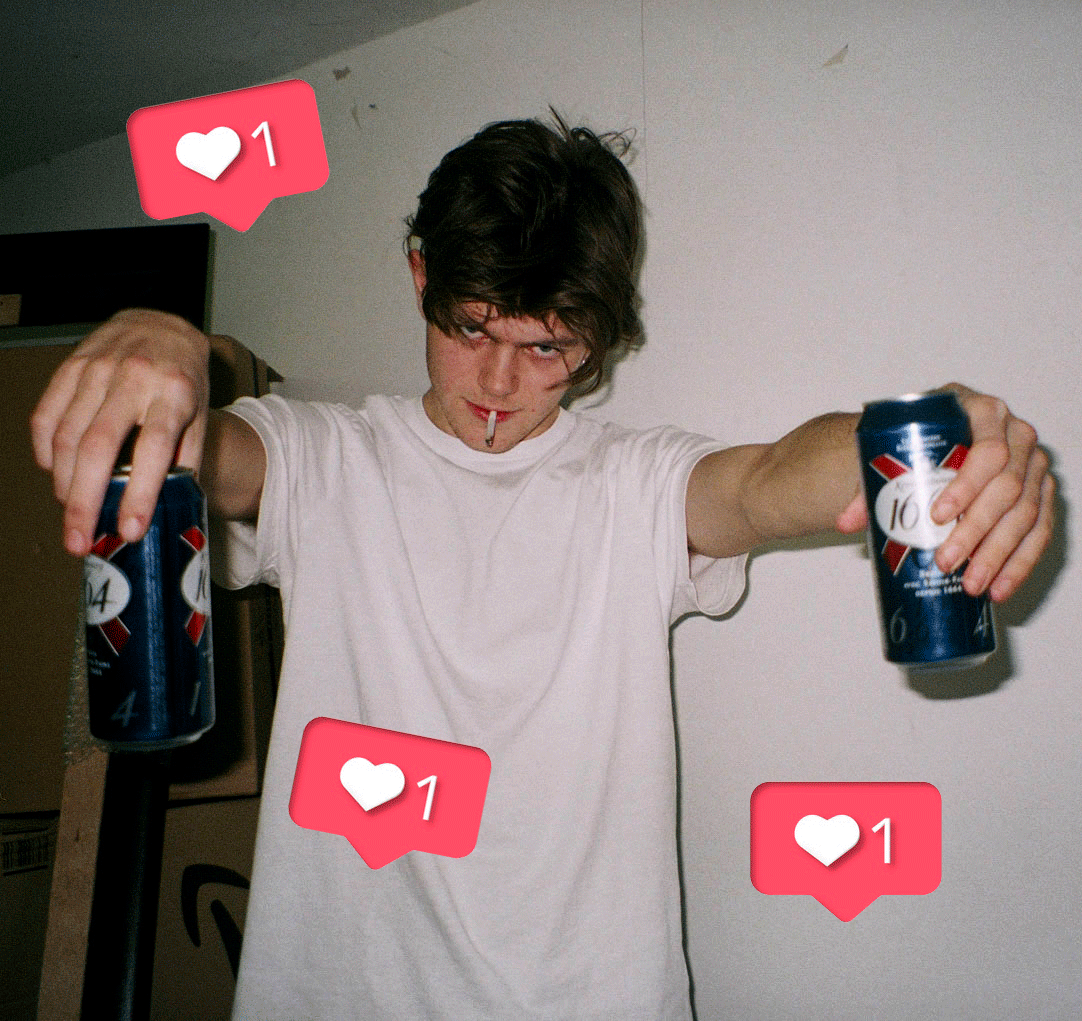
Photo: Emily Bowler
7. THE 'DRUNK' LIKE
In which we like things with a slightly less discerning eye because we’ve had six pints of Hells and we’re struggling to stand up straight in a bathroom
Do some of my best liking on the bus home at 2AM, because everyone gets likes: parties I’m not at, people I don’t know, photos of people doing karaoke, cats, dogs, reptiles, endless photos of curry people have eaten at The Roti King in Euston, wedding flashback photos (me, 1PM, sober and clear-eyed: "You got married once! Get over it!" Me, 12 hours later, drinking a tin at a bus-stop: “I love love! I very simply… love love!”), pictures of long distant beaches with "missing this today" grumpy captions. You simply all get a like. And I’m going to clatter into some DMs like the Kool-Aid jug falling through a wall, don’t you worry.
8. THE 'CELEBRITY' LIKE
In which we wonder why we are debasing ourselves by being Kim Kardashian’s 432,757th like of the day
Often I think, as I’m absolutely obliterating the like button on the latest Charli XCX upload, I think: why am I doing this? Charli XCX is not going to notice me doing it, but I do it anyway, despite the whole exercise being pointless. "Joel," she says, in that voice she does, in an imaginary scenario where she delicately moves into my "Other" inbox. "I see you liking two out of every three of my Instagram uploads, which: nice. That is the perfect number of likes to make me notice you’re there but not actively think you’re trying to chirpse me. It gets a big yuh from me." We instantly fall in love (she keeps making me wearing transparent crop tops for some reason, but at this point, whatever, I don’t care) and I move into a house she’s bought in LA, balcony and expensive dressing gowns and everything. "Thank you, Instagram," I hiss into the blurry setting sun. "Thank you, thank you." But no, that never happens, and instead you find yourself at the doorstep of a celebrity Instagram post, thousands of comments and millions of likes, and you are like: I am an ant. An insignificant ant. They do not know if I am alive or dead. And then, with a sickly little clunk of self-loathing, you hit that like button, don’t you. Don’t you. Complex app, Instagram, isn’t it? Some weird little feelings, bubbling up to the surface, ah?

9. THE 'DUTY' LIKE
In which you like your boyfriend or girlfriend’s Instagram post because they are your boyfriend or girlfriend
I noticed as soon as they both decompressed from the immediate-onslaught post-Love Island press cycle that Jack Fincham from last season’s show basically commented the same thing on every one of his boxfresh-new girlfriend Dani Dyer’s Instagram account, and that was, simply, the word: "Sort". Dani in a bikini: sort. Dani announcing a new Boohoo line: sort. Dani at the Specsavers Spectacle Wearer of the Year Awards: sort, sort, sort, glasses-face emoji, banter with Eyal in the comments section.
In real life, though, you find yourself less inclined. If you see someone naked more than twice a week then you have to like every Instagram post they do: sorry, but it’s the law. The sooner after uploaded the better, as well. Without that double-tap, there are politics (“Why didn’t you like my Instagram post, then?”). Without that double-tap, there is trouble in paradise. You bang the heart button. You’re two years into the relationship and the sex has started to decline, but you still both go to brunch together every Saturday and their parents invited you on holiday this year so you’re pretty much locked-in: smash the like button. Picture of a newly-rearranged bedroom, picture of a swipe-card pass for a meeting they had at a company cooler than their own, blurry photo of a dog running away: doesn’t matter what the shit is. You slam it with a duty like because that’s your fucking job.
10. THE 'BABY' LIKE
In which we recognise that some of our friends are happy in a dimension different to our own
If you had a baby I have to give you a like, and I don’t like that. Happy you’re happy with your baby, obviously, but it looks like a mound of pizza dough swaddled in a towel. I understand a very primal lizard-brain part of yourself is now deeply in love with this thing, but it leaves me cold. I’ve seen your scan, I’ve seen the progression of your bump, I’ve seen the baby shower I wasn’t invited to, I’ve seen you go quietly offline for the three weeks preceding the birth. I have been clicking like for months. Now I see the baby. Have your fucking like, alright. I hope you and your family are deeply happy for the rest of your lives! I will like every upload of their progress from now until the end of time!
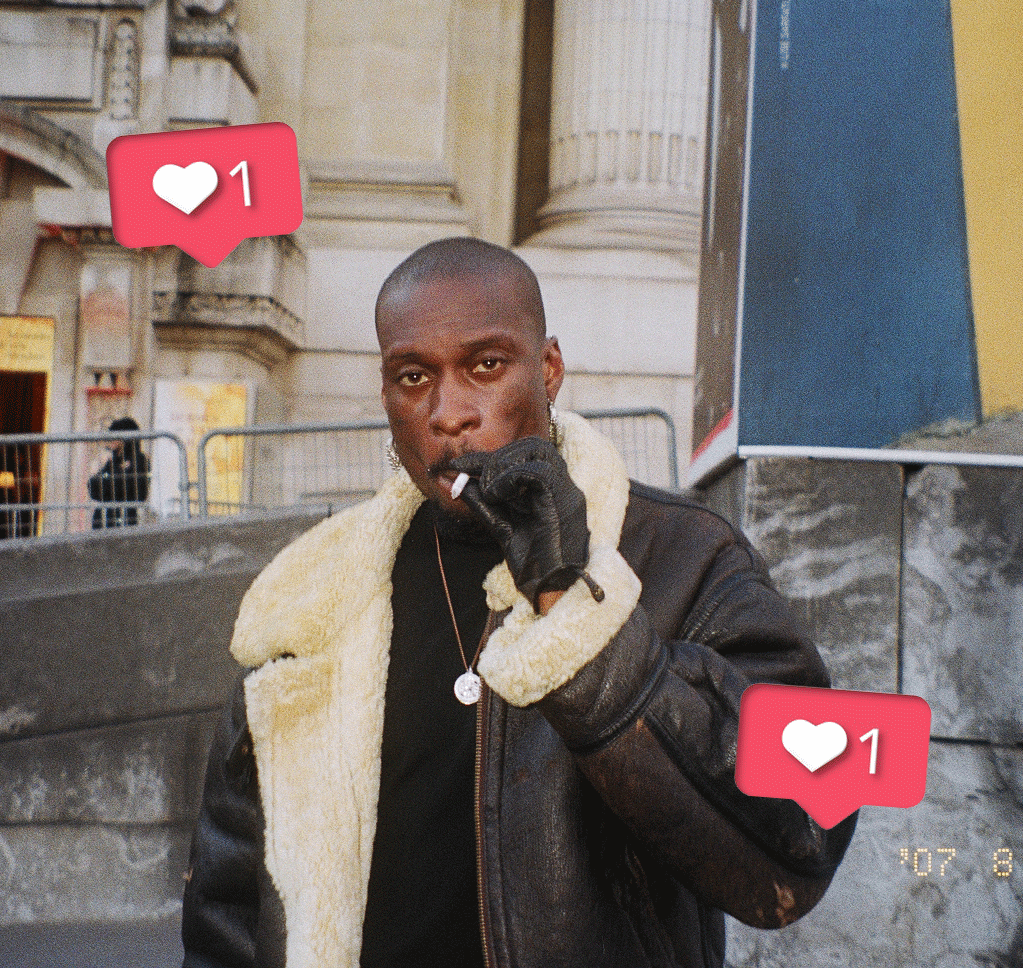
Photo: Emily Bowler
11. THE 'GOOD OUTFIT' LIKE
In which we like someone’s outfit more than them as a whole
I would say I’m happy with the outfit I clang together maybe one morning out of every 40, so damn fucking right you’re going to get a fitpic on Instagram if I’ve somehow managed to put jeans, a T-shirt and a jacket together in a coherent manner. This goes triple if I follow you on Instagram: new padded winter jacket? Big ol’ like and a comment asking where you bought it. Box-fresh trainers on a rainy overground platform? You get a like, you get a like, big booty like for you. When someone uploads an outfit selfie, they are not saying: here, the clothes I bought with money, they are good. They are saying: I am absolutely fucking feeling myself today. I am electric with horny energy for my own self. Fuck me absolutely up. And they get a little like for their efforts.
12. THE 'LIKE-THE-CAPTION' LIKE
In which we like the caption if not exactly the photo
If the caption makes me laugh, you get a like before I’ve even processed the photo. I read faster than I see, somehow. This has caught me out, previously – I once clicked "like" on someone’s funny caption and it turned out the picture was a crying selfie and the whole thing was a documentation of a long-ignored-by-me mental downswirl, and I had to DM them and be like “sorry that 'like' was probably inappropriate, v. shaky on the rules re: rescinding it now, i.e. would that make the crying better or worse" – but, broadly, funny caption gets you more likes than, like, just straight up looking good.
13. THE 'WE HAD SEX ONCE AND NOW WE DON’T SO I DO A VERY CAREFULLY CURATED ONE-IN-THREE OF YOUR PICTURES LIKE SO YOU KNOW WE’RE STILL FRIENDS BUT NOT IN A HORNY WAY' LIKE
In which we skip gaily into a minefield
Think this one explains itself really, but you still get a hot weird sweat when you click "like" on it, don’t you.
14. THE 'RECIPROCAL' LIKE
In which you pay the piper in the form of ‘more pipe’
Reading this back, it really does make me sound like I "hammer the L" (fun new way I have invented for saying "click the like button") on every post I see on Instagram, which is broadly untrue. That said: you’ve always got about eight to 12 people in your notifications folder who hit like on literally everything you do, don’t you? DM’d you saying something nice once and when you were trying to reply you accidentally followed them back.
Too awkward to disengage now because they respond to every Story you do with the cry-laugh emoji. Are you… friends? You’re not friends. But you see them pop up in your feed and think of that time they liked 32 of your pictures in a row and the activity made your phone so hot it turned itself off and you had to ask the staff at Chick ‘n’ Sours if they could plug it in behind the counter, and, begrudgingly, without any joy at all, you "bong on the hearty" (another fun new way I invented). You slug. You powerless little slug.
15. THE 'PASS-AGG' LIKE
In which we make a point
The pass-agg like comes in exactly two forms: i. you took a photo of your friend that they end up putting on Instagram and getting inundated with likes on, and you feel you are owed a certain ethereal vig for that thing, so you click the like button and comment "nice photo!!!!! who took it???" as well as doing a fun-and-cheery-but-actually-quite-dark-and-sharp-edged text to them about it until they fold and edit their caption to credit you, and you get two new followers off the whole debacle; and ii: you click "like" on a party photo all of your friends are sticking their tongues out and doing the peace sign in, but weird – weird one – weirdly, you were not invited. And they shall know. And They Shall Know You By The Trail Of The Like.
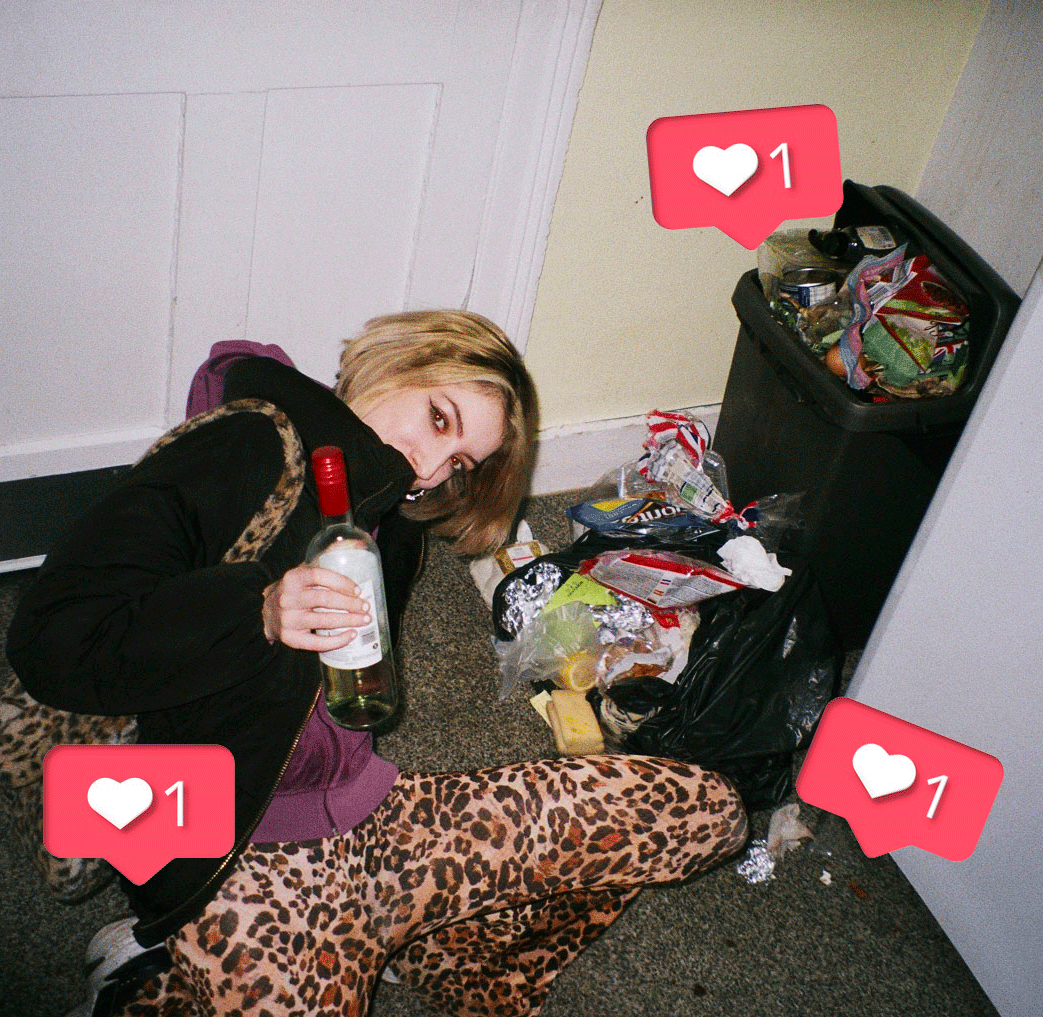
Photo: Emily Bowler
16. THE 'LIKING A PHOTO OF A PARTY YOU BAILED ON' LIKE
In which we invert the aggression of the like directly above
Once you hit 25 you start cancelling plans on the day about 900 percent more than you ever did in your life before, and this party you were meant to go to – someone’s birthday, but it’s too far away and the same friends they always have at every party are fucking nerds, and you always end up talking to that fucking nerd one and you’ve met them like seven or eight separate times now and you never remember their name but here they are again, fucking hell, sidling up with a pint and asking you how work is; it’s fucking Saturday, mate, don’t ask me about work – anyway, you bailed on this one because you couldn’t be arsed, plus it was looking sort of like it was going to start raining and they all upload the same photo anyway (a nerd move, frankly) and you like them all in turn and even go so far as to comment "sad to miss it :(" on the main birthday boy or girl’s post, but you’re not sad to miss it at all, are you? You and your duvet and the whole box of Chocolate Weetos you inexplicably ate in bed are absolutely not sad to miss it at all, are they, you horrible little worm.
17. THE 'DADDY HUNGRY' LIKE
In which we like a picture of some food simply because we are hungry
I’ve previously been so hungry in my life that I’ve liked a Buzzfeed Tasty video, and if you’ve ever seen those things – it’s always someone, like, fucking microwaving a dish of cheese until it roughly melts, then mashing marshmallows into the top, slicing the resultant wad like a pie – that should tell you everything about the sanity of the hungry mind on Instagram, i.e. it is not sane, not even at all.

Photo: Emily Bowler
18. THE 'JEALOUSY' LIKE
In which we should probably re-evaluate our lives and behaviours tbqh
The scenario is this: you just started talking to someone and you’re in that knife-sharp heightened-senses zone where everything they do and un-do to you is interpreted as some sort of grand you-focused gesture – not texting back for an hour is the world’s greatest par, going out for drinks with friends when you know it’s simply far too early to start inviting you to that sort of thing is seen as a sort of snub, them literally commenting on other people’s photos makes you pang and ache with jealousy – and when you’re in this delirious semi-horny, semi-angry state it’s possible – and I’m not saying it’s healthy, but it’s possible – it’s possible to like the photos of people who are Better Looking Than Them And Also Probably Achievable For You To Bang As A Sexual Being, a move which, when done six or eight times in a row, is targeted like a grenade to go off in their activity feed as a little reminder of how hot and wanted you are. Don’t do this – it’s wobbling deep into psychotic behaviour. But I’m just saying that you could.
19. THE 'I SEE YOU HAVE NOT REPLIED TO MY TEXT BUT YOU HAVE UPLOADED TO INSTAGRAM' LIKE
In which we get to the dark, treacle-sticky heart of human interaction
It’s sort of weird that Instagram started as a fun way of documenting our cats and our holidays and our meals in and our meals out, and every time we went to a football stadium or a pop concert; and then it morphed, imperceptibly, in front of our eyes: hyper-airbrushed #sponcon models and specially chosen pink-pastille palettes; the baffling idea of The Curated Grid; everyone making it look like they’re leading a better life than they’re leading, then turning round and hitting you with a 400-word caption about how "Instagram is just the highlights reel". I remember one of the first Instagram posts I did was a cut-out postcard of Princess Diana balanced nimbly over some topless models in a copy of Bizarre, placed on the oat-coloured carpet in my first London flat and taken, according to the picture quality, with – instead of a camera – the glass end of a broken lamp. And one day about two years ago I archived that (reasons unknown?????) and only started putting up the very best, the very most hand-curated photos of myself (also for reasons unknown?????), and tied myself to the drip-spike-drip cycle of dopamine that comes with getting an Instagram like. And what does an Instagram like even mean anymore? Does it mean: I like this? I want to eat this? I want to fuck it? I’m mad at it? Invite me to more things? Text me more? Be my friend? You are my friend? It’s 1AM and I’m both drunk and exceptionally horny? I accidentally tapped this twice while scrolling?
It is impossible to know what an Instagram like even means any more. Such is the beauty and the decay of this cursed, cursed app.
@joelgolby has a book out




/cdn.vox-cdn.com/uploads/chorus_asset/file/15977353/Screen_Shot_2019_03_21_at_11.28.21_AM.png)













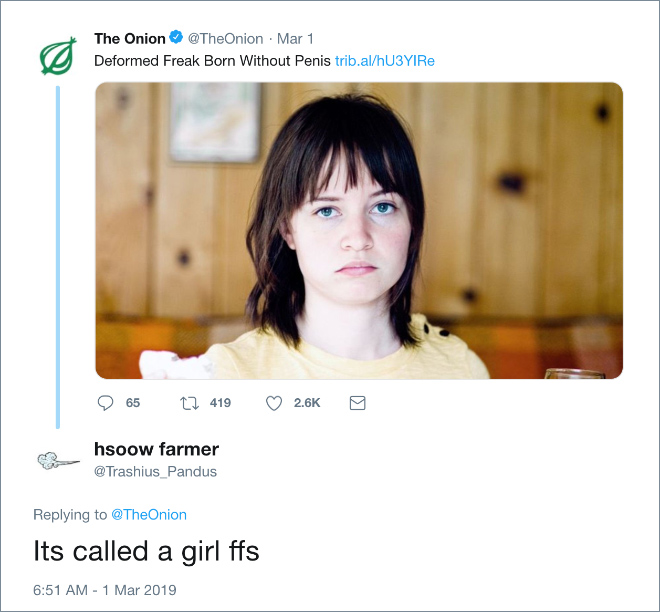



















 Raphael Buch Brage foi o último soldado supervivente en morrer dos miles de voluntarios que saíron dos Estados Unidos para ...
Raphael Buch Brage foi o último soldado supervivente en morrer dos miles de voluntarios que saíron dos Estados Unidos para ...


















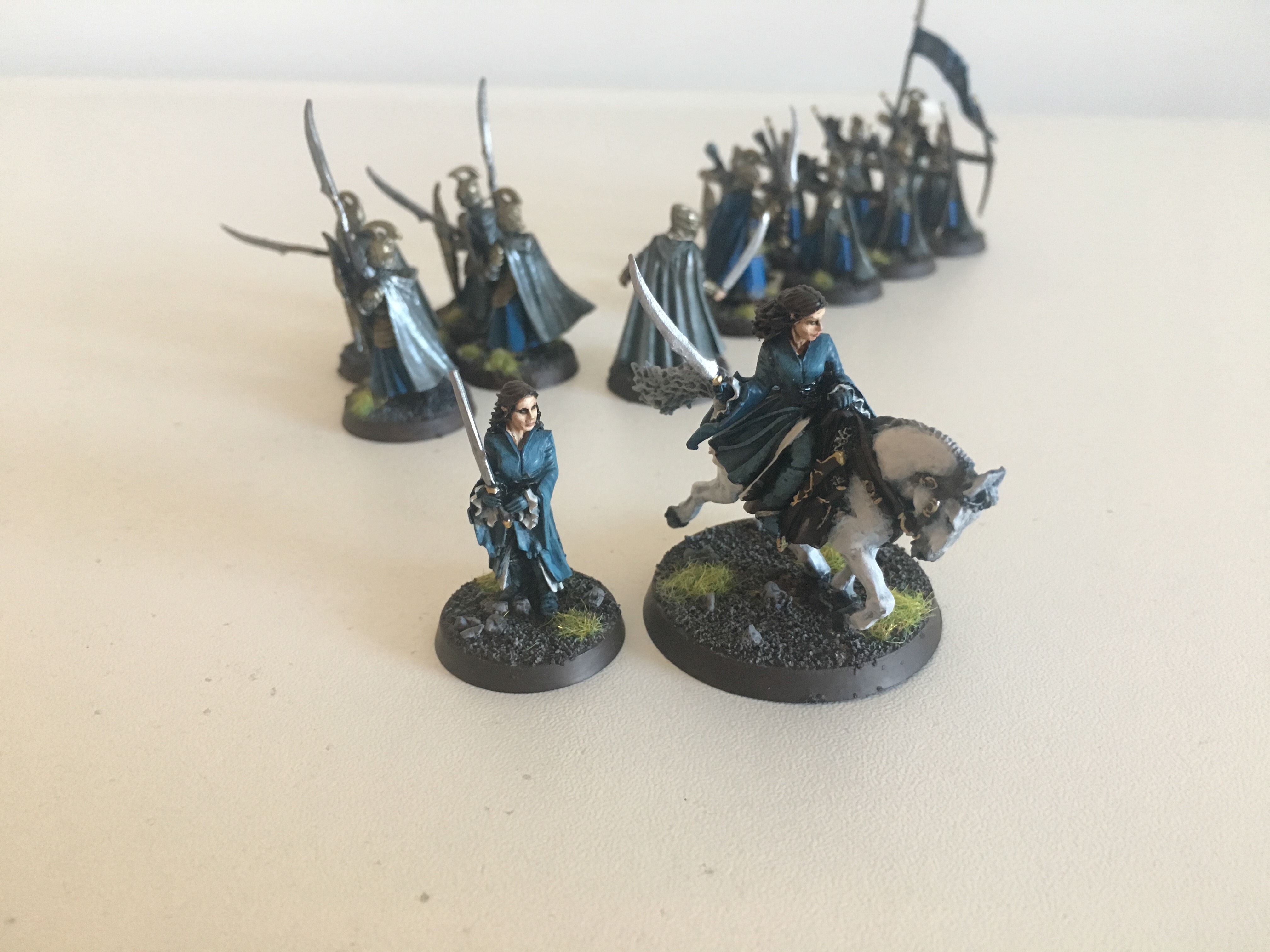



 O destacamento Manuel Bello, da IV Agrupación do Exército Guerrilleiro, seguindo orientacións da dirección da organización, viuse obrigado a desprazarse á comarca da Barcala, fuxindo da represión existente nas zonas onde operaba habitualmente. O grupo estaba formado naquela altura por Xosé María Castelo Mosquera “Doutor ou Casteliño”, natural de Oleiros e xefe do destacamento; Vicente Peña Terrasa “Pedro Borrás”, antigo suboficial da armada e comisario político; Manuel Pena Camino “O Dios ou O Flores”, antigo responsábel militar do Eduardo Xaneiro e na clandestinidade desde xullo de 1936; Manuel Ramiro Souto, albanel de Culleredo morto nun enfrontamento armado en Mesía en 1952, e Carme Temprano Salorio, veciña de Oleiros e anteriormente integrante do grupo de Xoán Couto Sanjurjo “Simeón”. Os membros do comando formaban un colectivo con longa experiencia na loita guerrilleira, procedentes os máis deles do antigo destacamento Eive Carbón e cunha práctica militante destacada nas áreas coruñesas, mariñás e ferrolás.
O destacamento Manuel Bello, da IV Agrupación do Exército Guerrilleiro, seguindo orientacións da dirección da organización, viuse obrigado a desprazarse á comarca da Barcala, fuxindo da represión existente nas zonas onde operaba habitualmente. O grupo estaba formado naquela altura por Xosé María Castelo Mosquera “Doutor ou Casteliño”, natural de Oleiros e xefe do destacamento; Vicente Peña Terrasa “Pedro Borrás”, antigo suboficial da armada e comisario político; Manuel Pena Camino “O Dios ou O Flores”, antigo responsábel militar do Eduardo Xaneiro e na clandestinidade desde xullo de 1936; Manuel Ramiro Souto, albanel de Culleredo morto nun enfrontamento armado en Mesía en 1952, e Carme Temprano Salorio, veciña de Oleiros e anteriormente integrante do grupo de Xoán Couto Sanjurjo “Simeón”. Os membros do comando formaban un colectivo con longa experiencia na loita guerrilleira, procedentes os máis deles do antigo destacamento Eive Carbón e cunha práctica militante destacada nas áreas coruñesas, mariñás e ferrolás.